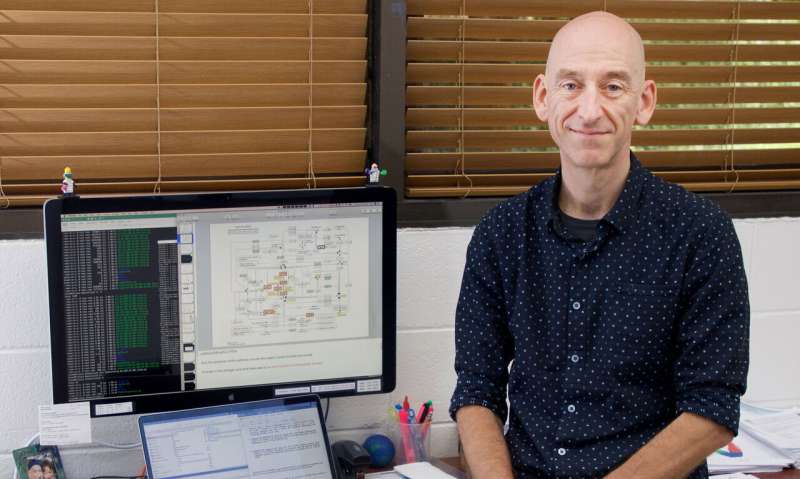Genomic migration analysis shows antibiotic resistance moving from humans to animals

A Clemson University professor's research has documented the movement of antibiotic resistance in humans into animal species.
College of Science researcher Vincent Richards recently published results that draw attention to reverse zoonosis, or pathogens moving from human populations to animals.
Every year, tens of thousands of Americans get sick from a variety of diseases contracted from animals. Known as zoonotic diseases, these infections are transmitted through food, water or direct contact with the animals. They include salmonella, E. coli, anthrax and cat scratch disease, to name a few.
While the U.S. Centers for Disease Control and other health agencies keep tabs on animal-to-human diseases, there's a dearth of knowledge about reverse zoonosis.
According to Richards, humans have acquired antibiotic-resistant genes, most likely through the overuse and abuse of prescription antibiotic drugs.
"I found actual cases of transmission of these antibiotic resistance genes from humans into livestock, companion animals and wildlife," said Richards, who speculates that the genetic material was transmitted via animal handling or through wastewater runoff.
Richards reported these findings in an article titled "Population gene introgression and high genome plasticity for the zoonotic pathogen Streptococcus agalactiae," which was recently published in Molecular Biology and Evolution.
In the study, he and his collaborators analyzed a global set of 901 genome sequences of the bacteria Streptococcus agalactiae (also known as group B Strep) from nine different host species—humans, cows, dogs, fish, frogs, gray seals, dolphins, goats and a camel—to better understand the transmission process. Streptococcus agalactiae can cause life-threatening illnesses like meningitis, pneumonia and sepsis in newborn babies. In addition, the bacterium is a leading cause of bovine mastitis, an inflammatory disease that limits milk production in dairy cows.
"One of the things that makes the bacteria so interesting is its wide host range," said Richards, an assistant professor in the department of biological sciences. "It doesn't just infect humans and cows, it infects a whole range of terrestrial and aquatic mammals, reptiles and amphibians, and fish. It has quite the taxonomic range for a bacteria."
As part of the analysis, Richards grouped the genes into core and dispensable categories. Core genes are shared by all the genomes, while dispensable genes only appear in some species' genomes. Together, the core and dispensable genes make up the pan-genome (the entire gene set of all strains of a species).
In classifying the genes as either core or dispensable, Richards was surprised to discover that only about 10 percent of the pan-genome was core while 90 percent was dispensable.
Significantly, the study showed how high bacterial genome plasticity can produce an expansive and yet highly partitioned pan-genome, which in turn facilitates further expansion of the pan-genome. Plasticity allows bacteria to adapt their DNA quickly so they can survive changes in their environment. As the pan-genome expands, continued adaptation to a diverse landscape of niches produces multiple biochemically diverse and divergent populations.
This population expansion can cause directionally biased spillover, demonstrating how genes selected in one niche or host can ultimately be transmitted into another.
"You have genes that are adapted to a particular population now being transferred into another population," Richards said. "A particular gene for antibiotic resistance that was selected in human populations is now being transmitted into animal populations."
In the future, Richards hopes to apply the genomic methods utilized in this study to his group's research on related strep bacteria found in the human mouth. Specifically, he'd like to examine the role that certain metatabolic genes have in tooth decay in children.
More information: Vincent P Richards et al, Population Gene Introgression and High Genome Plasticity for the Zoonotic Pathogen Streptococcus agalactiae, Molecular Biology and Evolution (2019). DOI: 10.1093/molbev/msz169
Journal information: Molecular Biology and Evolution
Provided by Clemson University




















